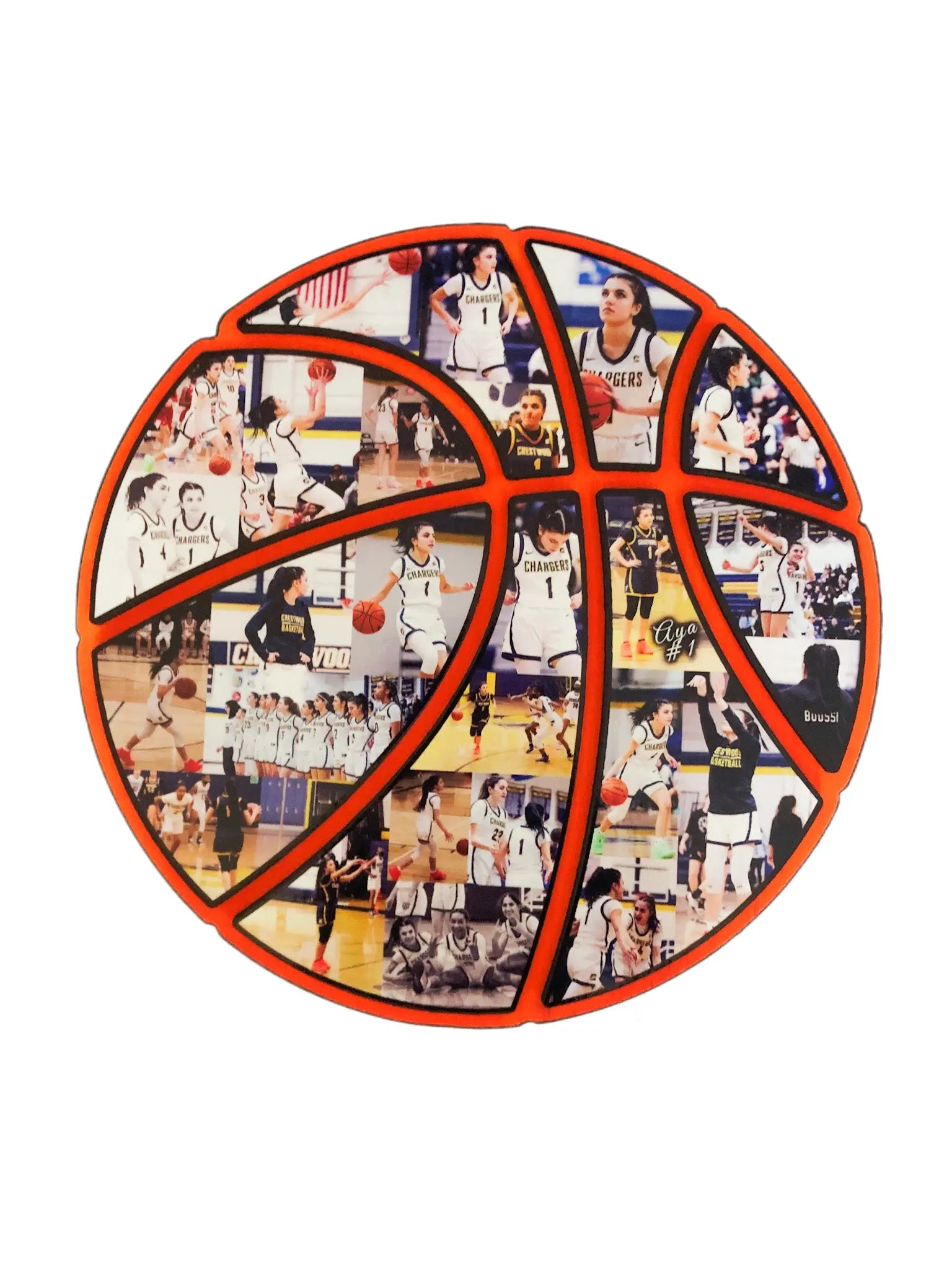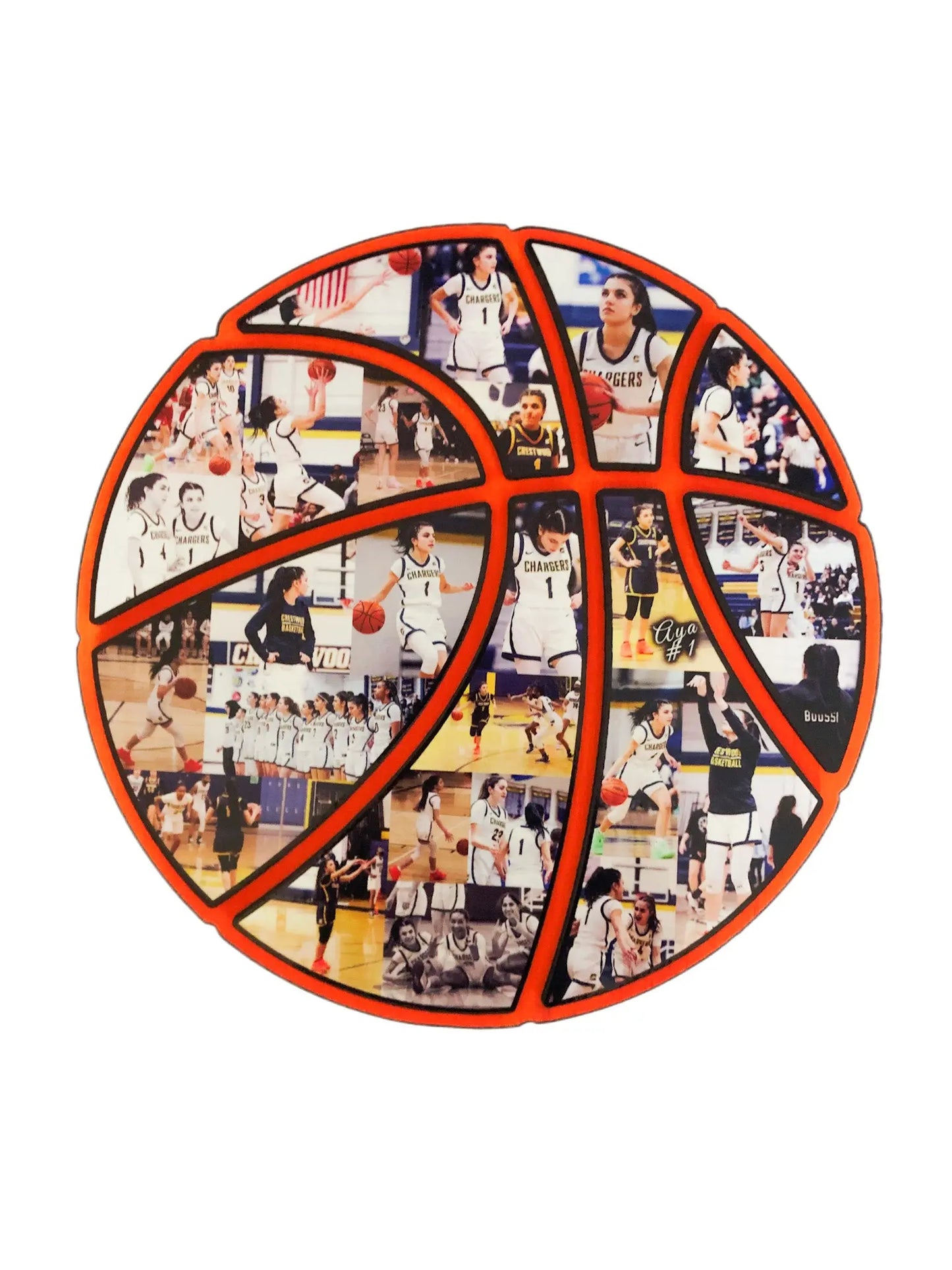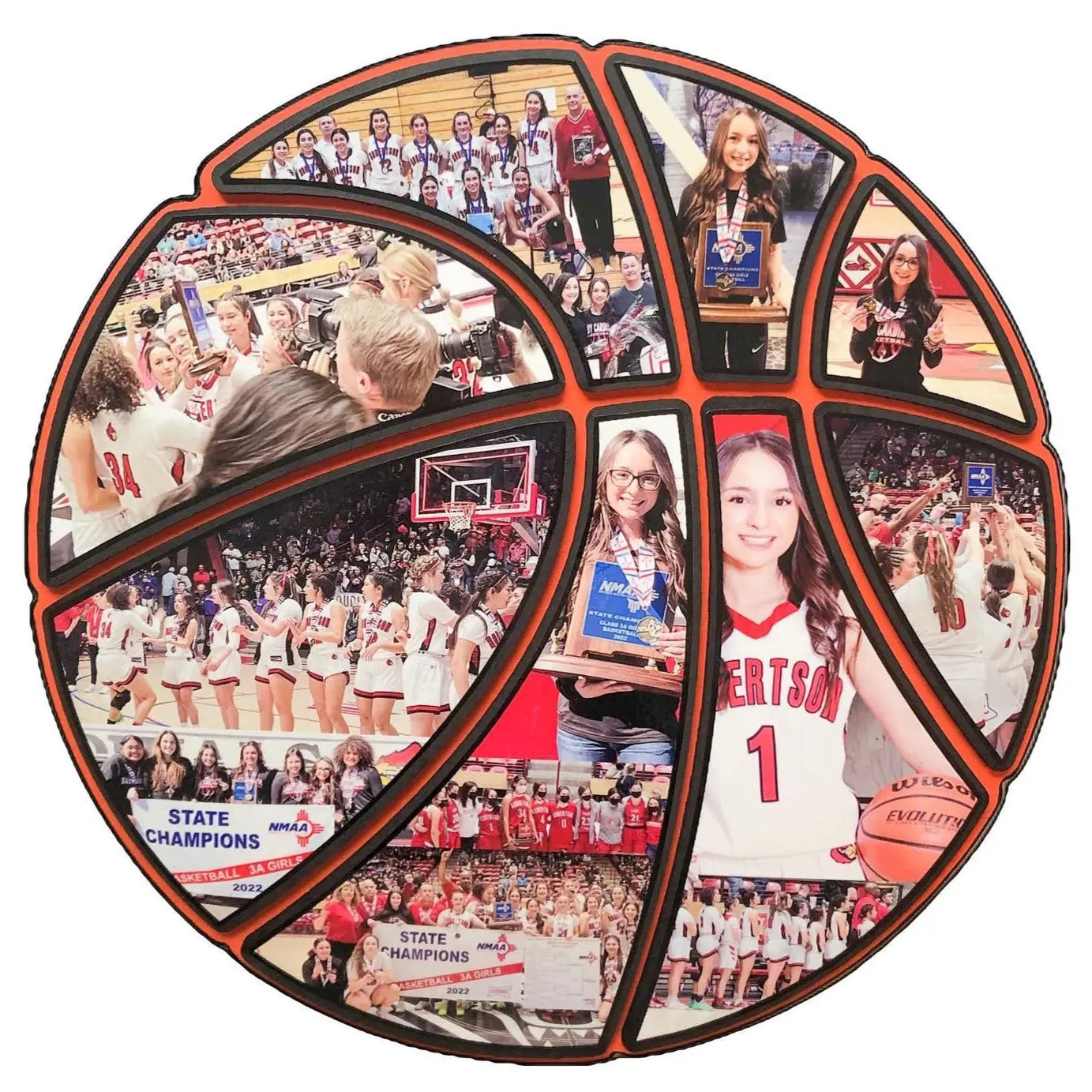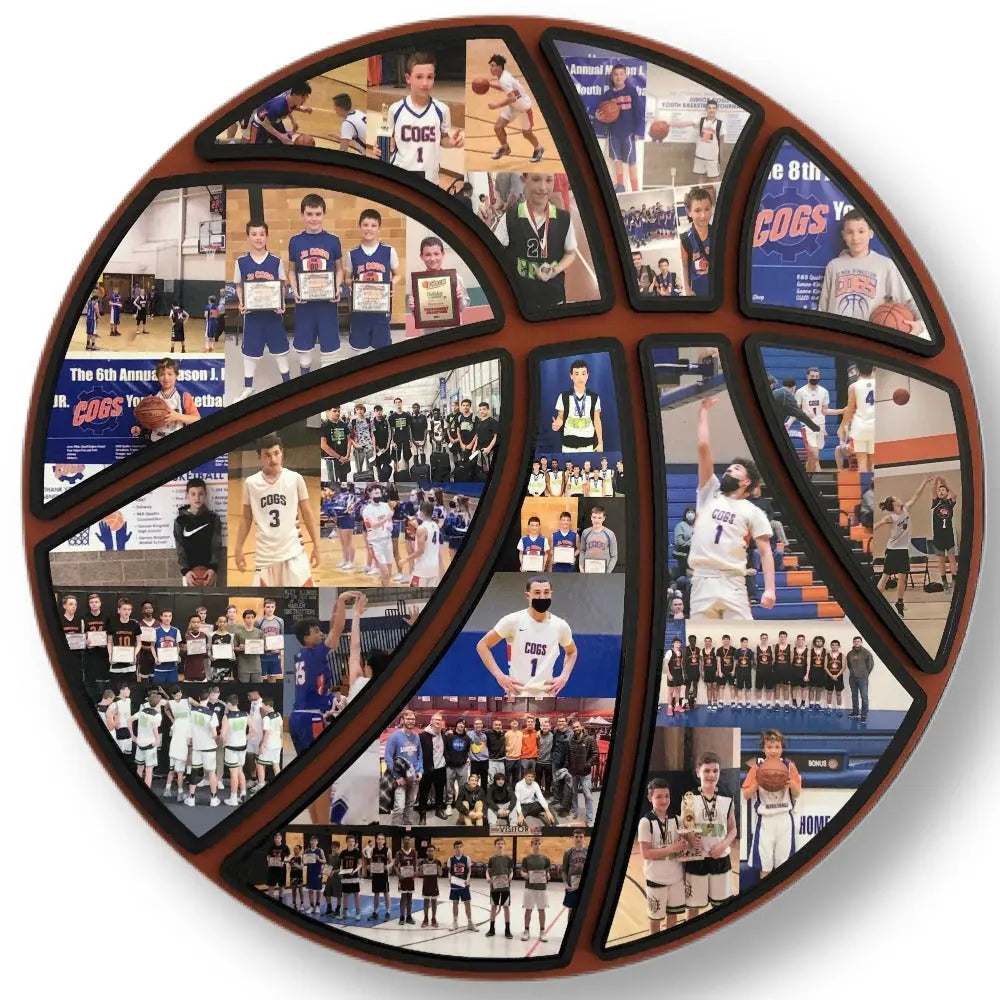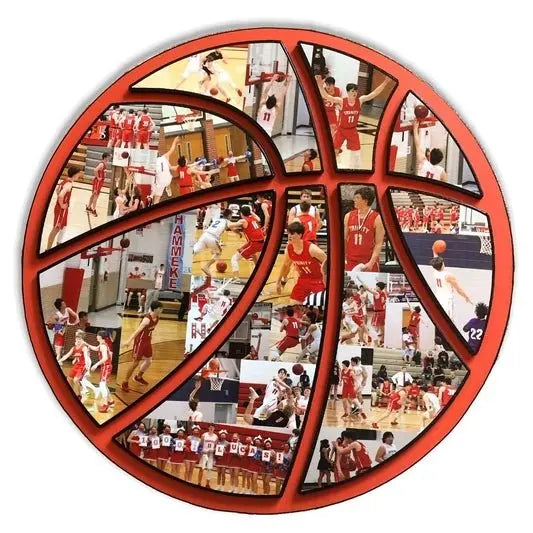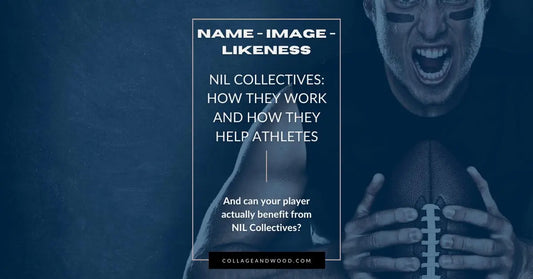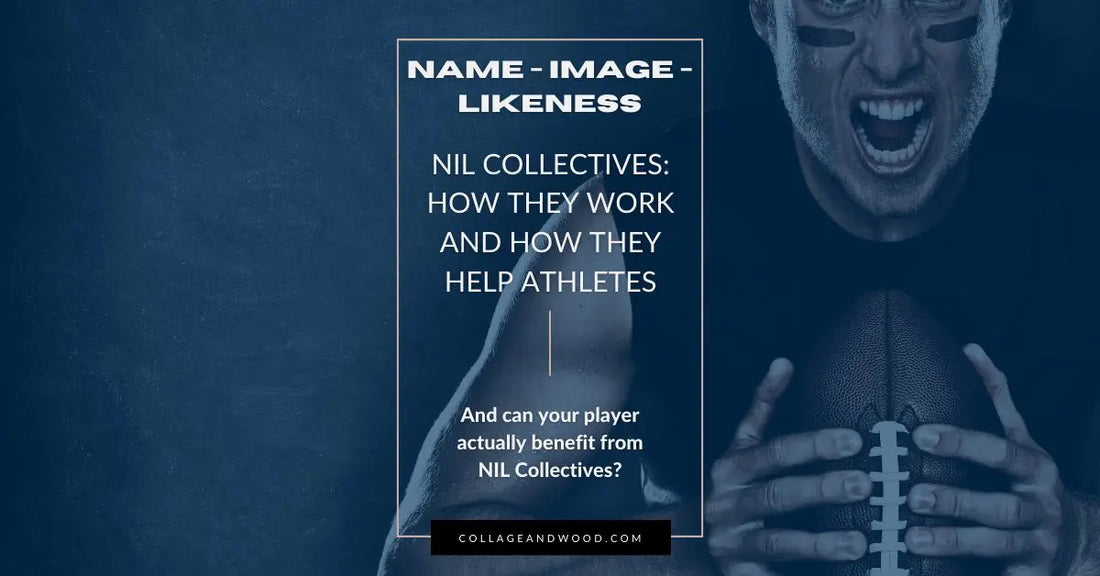
NIL Collectives: How They Work And Benefit Student Athletes
Crystal WaddellShare This Article
Exploring the Rise of Influential NIL Collectives in College Sports
Are NIL collectives game-changers in college sports? These organizations are at the forefront of a major shift, offering college athletes ways to generate income through their name, image, and likeness.
This article uncovers the framework and influence of NIL collectives, the new financial opportunities they present athletes with, and the broader implications of this change.
2024 Updates To Know Re: NIL Policies
In 2024, the NCAA introduced significant updates to the rules governing Name, Image, and Likeness (NIL) collectives, effective from August 1, 2024. These updates aim to provide more clarity and structure to NIL activities while addressing some of the challenges and potential abuses that have arisen.
Key Updates to NIL Rules:
- Institutional Involvement: Schools are now permitted to provide assistance and services to student-athletes in connection with NIL opportunities. This includes identifying and facilitating deals, which marks a shift from previous rules that restricted such involvement. However, schools still cannot directly compensate athletes for NIL activities.
- Disclosure Requirements: For student-athletes to receive institutional support, they must disclose their NIL agreements. This disclosure is essential for ensuring compliance and maintaining transparency.
- Booster and Collective Involvement: The NCAA has reinforced its stance against the involvement of boosters and NIL collectives in recruiting activities. Boosters are explicitly prohibited from offering inducements to prospective athletes, and schools are expected to self-report any violations of this policy
- Title IX Considerations: With the increased involvement of institutions in NIL activities, there is a heightened focus on ensuring that these activities comply with Title IX, which mandates gender equity. Schools must be vigilant to avoid any disparities in how NIL opportunities are provided to male and female athletes.
These updates reflect the NCAA's ongoing efforts to balance the autonomy of student-athletes in monetizing their NIL with the need to maintain fair recruiting practices and institutional integrity (Husch Blackwell: Trusted Legal Leaders) (On3 Sports).
Section above updated 8/19, 2024
Key Takeaways About NIL Collectives
- NIL collectives, born from legislation allowing college athletes to profit from their name, image, and likeness, facilitate endorsement opportunities for athletes, bridging the gap between them and financial compensation. These collectives are funded through contributions and serve to empower student-athletes beyond traditional scholarship aids.
- The involvement of NIL collectives in college sports is dual-sided; providing financial benefits and brand development prospects for student-athletes while enhancing their protection from exploitation. Yet, the NCAA has imposed restrictions on collective activities, specifically in the recruitment process, to safeguard the integrity of college athletics.
- NIL collectives are expected to continuously adapt to the changing landscape of college sports. As they develop new strategies that integrate technology and data analysis, their influence on recruitment and sports competitiveness is notable, albeit dependent on many variables including NCAA regulations and other factors such as coaching and team performance.
The Emergence of NIL Collectives in College Athletics
NIL collectives are entities that arose from legislation allowing college athletes to benefit financially from their name, image, and likeness (NIL).
These collectives serve as a bridge, connecting student-athletes with endorsement opportunities and generating revenue-generating activities.
Today, over 120 known NIL collectives cater to student-athletes across various universities.
These collectives are primarily funded through financial contributions from donors and boosters, including tax-exempt entities.
The funds are then utilized to establish paid endorsement opportunities for student-athletes, providing them with financial resources that were previously unattainable (at least within the scope of NCAA rules!)
This new landscape of college athletics has opened doors for student-athletes to receive financial compensation, a transformation that can be largely attributed to the influence of NIL money legislation.
The influence of name, image, and likeness legislation
College sports have undergone a significant transformation due to the NIL legislation. NIL makes income generation easier for student-athletes through licensing and endorsement agreements.
Now, athletes across Divisions I, II, and III have the potential to earn income from their NIL via commercial endorsements, appearances, and even social media posts.
Moreover, the legislation has been instrumental in the establishment of NIL collectives and NIL marketing companies.
Both offer a legal structure that empowers these entities to assist student-athletes in pooling and monetizing their NIL.
Welcome to a new era in college sports.
Key players in the NIL collective conversation
NIL collectives are blowing up. Several organizations and individuals have emerged as key players.
These include NIL collectives like the Clark Field Collective associated with the University of Texas, Friends of Wilbur & Wilma supporting Arizona, and BLVD LLC for USC.
Among these, Grove Collective is another organization that aims to pay athletes, including Oregon athletes, for their NIL through endorsement deals and other revenue-generating activities.
Prominent individuals involved in the establishment of these collectives include Brandon Sosna and Michael Jones of BLVD LLC.
Oliver Luck of the Country Roads Trust, and Kelly Woolwine of Triumph NIL, among others.
These individuals and organizations have played a crucial role in shaping the NIL landscape and ensuring that student-athletes can fully benefit from their NIL.
Benefits and Advantages of Joining an NIL Collective
College athletes stand to gain numerous benefits from joining an NIL collective. The collective's main goal is to grow the opportunities for athletes to profit from their NIL.
This includes financial advantages such as:
- receiving payments for services to charities
- direct monetary compensations
- investing in long-term financial stability
- promoting financial literacy
In addition to financial benefits, NIL collectives should aid athletes in personal brand development.
They orchestrate branding opportunities, align athletes for NIL deals, and foster relationships with relevant clubs and organizations.
At the same time, these collectives safeguard athletes from exploitation by offering financial advice and ensuring fair compensation.
Before you sign ANYTHING, make sure that the person selling you the world within an NIL deal is legit. A good place to go for resources is NIL Network. It was created to
Financial opportunities
Joining NIL collectives could lead to substantial financial gains for college athletes, as it includes:
- Receiving funds generated by these collectives
- Leveraging NIL opportunities
- Generating revenue through activities such as posting branded content on social media, participating in fan events, and receiving compensation for the use of their NILs.
The financial gain from NIL collectives can be substantial when compared to traditional athlete scholarships. While only a portion of Division I student-athletes receive athletic aid, which often isn’t a full scholarship, NIL can provide additional income, assisting in covering costs for student-athletes. Furthermore, college athletes have the autonomy to negotiate their own deals within an NIL collective, granting them control over their NIL engagements.
Personal brand development
Moreover, NIL collectives play a vital part in bolstering the personal brands of student-athletes. To illustrate, by participating in a NIL collective like West Virginia’s Country Roads Trust, an athlete’s personal brand benefits from financial compensation opportunities and aid in crafting a compelling message for their audience.Content creation by NIL collectives like Garnet Trust and Spyre Sports Group plays a significant role in enhancing the personal branding of student athletes. Some ways in which they do this include:
- Fostering connections between the fan base, student-athletes, and businesses through sponsored interviews and fan events
- Facilitating significant interaction and dialogue
- Elevating brand awareness
Protecting athletes from exploitation
The implementation of the NIL legislation has opened new doors for athletes.
NIL makes it legal to generate income from marketing deals, social media promotions, and merchandise sales.
NIL collectives and marketplaces play a crucial role in safeguarding college athletes from potential exploitation.
Collectives provide protection by consolidating booster and supporter funds, creating financial opportunities for athletes, and offering legal and financial counsel.
Additionally, NIL collectives are implementing measures through federal legislation, such as the PASS Act, to ensure athletes’ rights are protected.
Challenges and Controversies Surrounding NIL Collectives
While NIL collectives offer numerous benefits, they are not without their challenges and controversies.
The NCAA, for instance, has recently revised its NIL guidance to prohibit collectives from participating in the recruiting process, a decision aimed at safeguarding the integrity of college athletics.
This also raises concerns about the potential emergence of ‘pay-to-play’ models in the recruiting process, which could result in unfair advantages and potential exploitation of college athletes.
NCAA's stance on NIL collectives
The NCAA fought NIL collectives in the beginning.
They originally imposed restrictions on these collectives, prohibiting them from participating in the recruiting process.
The impact of NIL collectives on the recruiting processes in college sports is significant.
The involvement of these collectives has several implications:
- It limits the ability of recruiters to fully assess a recruit’s potential.
- It creates a larger division between schools.
- It could lead to a shift in the recruitment culture.
However, with the landmark decision in 2024, the NCAA has reversed in stance: and allows NIL collectives. As of this writing, how this is governed is still unclear and it's a bit of a Wild Wild West implementation.
University perspectives and relationships
Universities are also actively engaging with the rise of NIL collectives. Some key points to consider are:
- Some universities are enhancing their connections with NIL collectives.
- There are concerns about unequal support for women’s sports.
- There are concerns about the repercussions of schools’ collaboration with third-party collectives on their Title IX responsibilities.
NIL collectives offer support and management services to student-athletes looking to monetize their NIL rights.
They can organize fundraising initiatives to generate revenue for university athletics departments for the benefit of all athletes.
Ethical considerations
The rise of NIL collectives has also sparked a series of ethical considerations.
The monetization of student-athletes’ NIL raises distinctive legal and business considerations, sparking policy debates and hearings to regulate NIL in college sports.
NIL collectives infringe upon amateurism by enabling athletes to monetize their NIL, challenging the traditional concept of amateurism and raising concerns about fairness and integrity within the sports environment.
To uphold ethical practices, NIL collectives implement integrated sponsorship models and remain vigilant of potential ethical pitfalls.
NIL Collectives and Local Business Involvement
NIL collectives, as well as other collectives, have not only established meaningful partnerships with local businesses, but these collaborations are mainly geared towards marketing strategies and charitable initiatives, which are mutually beneficial. NIL collectives have engaged in collaborations with local businesses on marketing strategies, primarily through endorsement and product deals across various industries.These collaborations provide local businesses with increased compensation, opportunities for local business leaders’ involvement, and the ability to draw attention to minority-owned businesses.
Collaborative marketing efforts
Collaborative marketing with NIL collectives offers a wider range of advertising options for local businesses. It highlights black-owned and minority-owned businesses and delivers immediate rewards for advertising and marketing endeavors. The collaboration between NIL collectives and businesses in marketing campaigns facilitates compensation for college athletes and guarantees their equitable participation in revenue.
This collaboration also provides authenticity and a direct rapport with the target audience, ultimately enhancing the reach and impact of marketing campaigns.
Charitable initiatives
NIL collectives are about more than business; they also focus on community service. They have cultivated partnerships with several charitable organizations, contributing to both local and broader community initiatives. In the context of a school’s nil collective, they encourage student-athletes with a dedication to charity to submit proposals for funding, supporting their charitable endeavors, and enhancing their leadership in philanthropy.
These charitable initiatives assist athletes, particularly student athletes, by providing substantial benefits such as financial compensation, endorsement opportunities, and avenues to connect student athletes in engaging in philanthropy without violating NCAA regulations.
The Future of NIL Collectives and Their Impact on College Sports
As we look forward, NIL collectives are anticipated to keep evolving and adjusting to the dynamic landscape of college sports. This could lead to a future marked by changing strategies and models for NIL collectives. Anticipated strategies encompass:
- Expansion of services
- Forming partnerships with marketing agencies
- Collaborating with universities
- Advocating for representation
- Providing education and empowerment for student-athletes
Evolving strategies and models
NIL collectives are actively advocating for amendments to foster a legal environment favorable to NIL deals. They are also supporting federal legislation aimed at tackling compliance issues and concepts relevant to NIL collectives. Some of the strategies they are using include:
- Incorporating technology and digital media into their strategies through digital fundraising
- Leveraging their social media presence for lucrative deals
- Utilizing technology for data analysis
- Employing cutting-edge technology for interactive content creation
The strategies and models of NIL collectives have evolved to align with NCAA regulations and the evolving NIL landscape. Every Power 5 school is expected to have a NIL collective within a year.
Potential effects on recruiting and competitiveness
NIL collectives have the potential to disrupt recruitment strategies by constraining talent evaluation opportunities and favoring certain schools through financial incentives for athletes. NIL collectives, which operate independently from schools, support student-athletes in pursuing NIL opportunities and can influence college sports recruitment by offering extra financial incentives for athletes to select specific schools.
However, the actual effects are complex and influenced by factors such as coaching quality, historical team performance, and conference strength.
Summary
In conclusion, NIL collectives have significantly reshaped the landscape of college sports, offering unprecedented opportunities for student-athletes to monetize their name, image, and likeness.
They provide financial opportunities, aid in personal brand development, and protect athletes from exploitation.
However, they also pose challenges and controversies, particularly in relation to NCAA regulations, university relationships, and ethical considerations.
As NIL collectives continue to evolve, they are likely to have a significant impact on the future of college sports, DEFINITELY affecting recruitment strategies and the competitiveness of college athletic programs.
Frequently Asked Questions
What are collectives in history?
In history, collectives are characterized by attempts to share and exercise political and social power, making decisions on a consensus-driven and egalitarian basis. This helps in understanding the nature of collective movements.
How do collectives operate?
Collectives operate by generating and pooling revenue from various sources, which is used to create opportunities for members while making decisions democratically and without hierarchy. This allows every member to have equal decision-making power, ensuring that no one holds special authoritative power.
What are NIL collectives and how did they emerge?
NIL collectives are entities formed as a result of new legislation allowing college athletes to benefit from their name, image, and likeness, connecting them with endorsement opportunities. This has emerged from the changing legislation concerning college athletes' financial rights.

